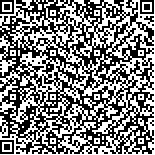| 本文已被:浏览 1776次 下载 4883次 |

码上扫一扫! |
|
|
| 鞍带石斑鱼工厂化育苗研究 |
|
黄宗文1,2, 骆 剑1,2, 林 彬1,2, 郭仁湘1,2, 杨 薇1,2, 陈国华1,2
|
|
1.海南大学海洋学院;2.热带生物资源教育部重点实验室
|
|
| 摘要: |
| 作者设计了一种新的鞍带石斑鱼(Epinephelus lanceolatus)工厂化人工育苗方法。测定了鞍带石斑鱼人工育苗过程中水环境因子和育苗水体浮游生物的种类、数量变化。育苗期间水温28.0~30.7℃; 盐度为27.0~32.0; pH 值为7.39~7.90; 溶氧量6 mg/L 以上; 中午池面平均光照3315.9 lx; 记录了1 d 的光照、水温、溶解氧和pH 的变化; 育苗池前18 d 只加水不换水, 氨氮不断上升, 最低值0.24 mg/L, 最高值2.53 mg/L, 育苗后期采取换水措施, 氨氮迅速下降; 育苗期间, 水体除正常投喂的轮虫(Brachionus plicatilis)和桡足类外, 池中出现浮游植物12 种、浮游动物5 种, 浮游植物平均生物量6.92×106 个/L, 原生动物平均生物量0.74×106 个/L。经过34 d 的培养, 得到平均全长2.45 cm 鱼种, 单位水体育苗密度300 尾/m3, 育苗成活率为2.73%。结果表明, 用有效微生物群(effective microorganisms,简称EM) +高级虾片调节水质的模式, 可以保持育苗水质稳定, 成功培育出鞍带石斑鱼幼鱼。 |
| 关键词: 鞍带石斑鱼(Epinephelus lanceolatus) 人工育苗 水环境因子 |
| DOI: |
| 分类号: |
| 基金项目:国家科技支撑计划资助项目(2007BAD29B01,2007BAD29B02); 海南大学重点科研资助项目(hd09xm11) |
|
| Industrial seed culture of Epinephelus lanceolatus |
|
HUANG Zong-wen,LUO Jian,LIN Bin,GUO Ren-xiang,YANG Wei,CHEN Guo-hua
|
| Abstract: |
| We reported a modified industrial breeding method of Epinephelus lanceolatus. The variations of water environment factors, as well as the type and quantities of micro-planktons were recorded during the whole artificial breeding process. The fertilized eggs of E. lanceolatus could hatch completely and develop into normal larval fishes under the following conditions: 28~30.7℃, 27~32 salinity, pH 7.39~7.90, >6 mg/L DO, and 3315.9 lx average noon illumination intensity. Variations of these environmental factors during the time span of a day were also recorded every two hours. The concentration of Ammonia nitrogen went from 0.24 mg/L up to 2.53 mg/L 18 days after the addition of water, and it then dropped dramatically after water renewing at the later stage. During the whole culture process, 12 types of phytoplanktons and 5 types of zooplanktons were detected in the breeding pool. The average concentrations of plankton and protozoa were 6.92×106/L and 0.74×106/L, respectively. At the end of our 34-day industrial culture experiment, the average length of grouper larvae reached 2.45cm, and the density was 300/m3. The survival rate of grouper larvae was 2.73%. The result of this study indicated that using effective-microorganism (EM) mix shrimp-cracker method, the water quality could remain suitable for E. lanceolatus larvae growth. |
| Key words: Epinephelus lanceolatus artificial breeding water environment factors |
